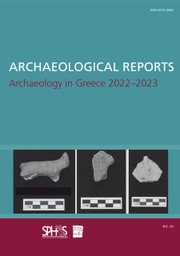No CrossRef data available.
Article contents
Archaeological textiles excavated in Greece
Published online by Cambridge University Press: 13 February 2018
Extract
This paper offers an account of the archaeological textiles excavated in Greece, consideration of the challenges one has to deal with when studying such materials and a discussion of ways to overcome them. A complete list of archaeological textiles excavated in Greece is not within the scope of this paper, since such comprehensive studies have been published previously (Spantidaki and Moulhérat 2012; Moulhérat and Spantidaki 2016) and, of course, the corpus of such textiles is continuously expanding.
The study of textiles is an emerging and fast-growing field of Greek archaeology (Gleba 2011). The number of archaeologists and conservators working with and studying archaeological textiles is steadily increasing, thus raising the general awareness of textiles and expanding the corpus of known ancient fabrics. In recent years, several research projects have investigated ancient Greek textiles, such as those conducted by the Centre for Textile Research at the University of Copenhagen (for example Textile Economies in the Mediterranean Area), several funded by Marie Skłodowska Curie Action grants and some by European Research Council grants (for example Production and Consumption: Textile Economy and Urbanisation in Mediterranean Europe 1000–500 BCE hosted by Cambridge University).
- Type
- Archaeology in Greece 2016–2017
- Information
- Copyright
- Copyright © Authors, the Society for the Promotion of Hellenic Studies and the British School at Athens 2017




